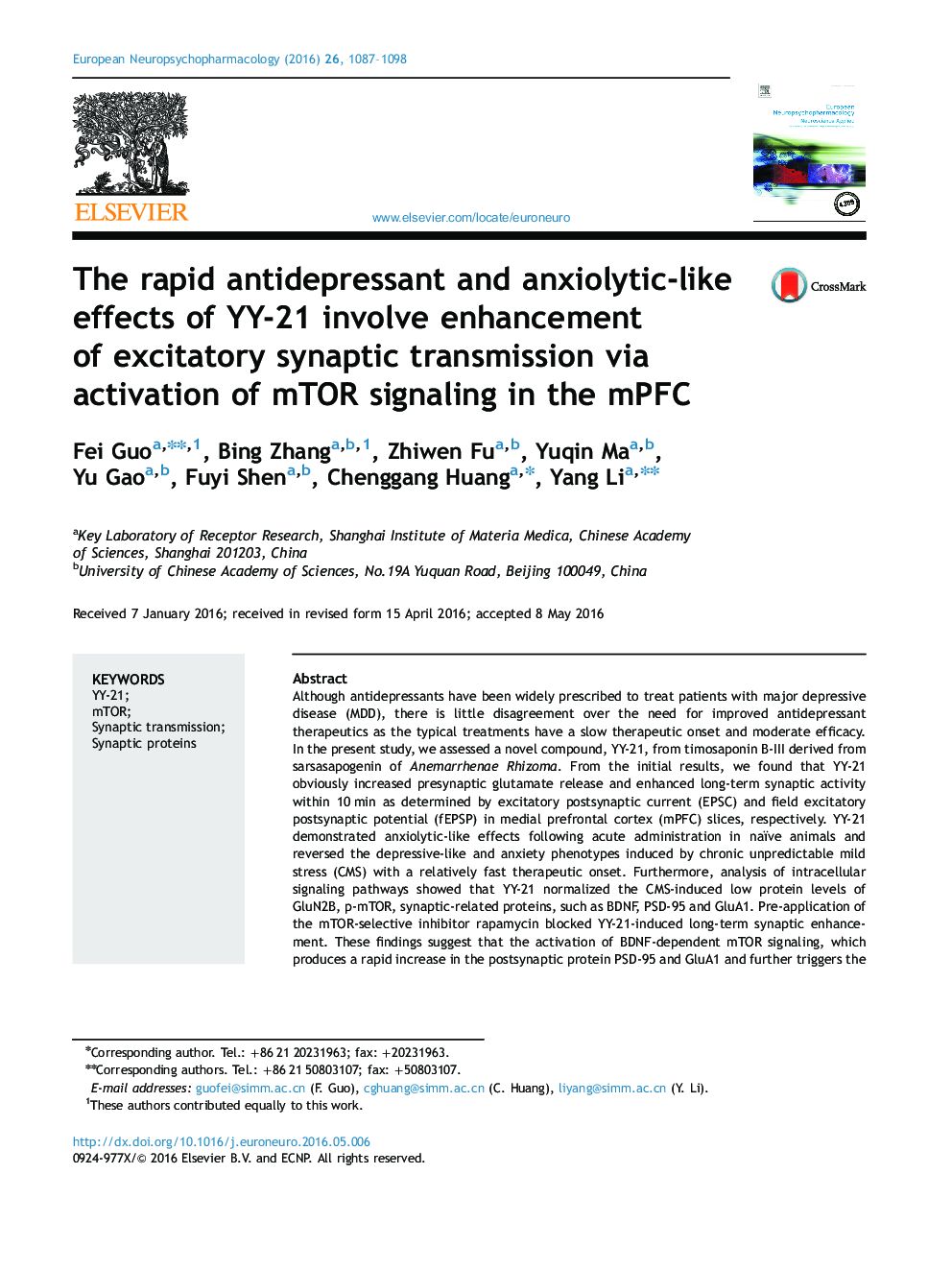| Article ID | Journal | Published Year | Pages | File Type |
|---|---|---|---|---|
| 318703 | European Neuropsychopharmacology | 2016 | 12 Pages |
Although antidepressants have been widely prescribed to treat patients with major depressive disease (MDD), there is little disagreement over the need for improved antidepressant therapeutics as the typical treatments have a slow therapeutic onset and moderate efficacy. In the present study, we assessed a novel compound, YY-21, from timosaponin B-III derived from sarsasapogenin of Anemarrhenae Rhizoma. From the initial results, we found that YY-21 obviously increased presynaptic glutamate release and enhanced long-term synaptic activity within 10 min as determined by excitatory postsynaptic current (EPSC) and field excitatory postsynaptic potential (fEPSP) in medial prefrontal cortex (mPFC) slices, respectively. YY-21 demonstrated anxiolytic-like effects following acute administration in naïve animals and reversed the depressive-like and anxiety phenotypes induced by chronic unpredictable mild stress (CMS) with a relatively fast therapeutic onset. Furthermore, analysis of intracellular signaling pathways showed that YY-21 normalized the CMS-induced low protein levels of GluN2B, p-mTOR, synaptic-related proteins, such as BDNF, PSD-95 and GluA1. Pre-application of the mTOR-selective inhibitor rapamycin blocked YY-21-induced long-term synaptic enhancement. These findings suggest that the activation of BDNF-dependent mTOR signaling, which produces a rapid increase in the postsynaptic protein PSD-95 and GluA1 and further triggers the long-term enhancement of synaptic neurotransmission, may be the mechanism underlying the rapid antidepressant and anxiolytic effects induced by YY-21.
